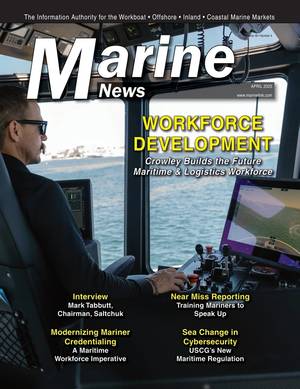Sonar
Sonar is a technique that uses sound to navigate, communicate with or detect other vessels, and to observe the distance and velocity of underwater objects. The acoustic frequencies used vary from extremely low (infrasonic) to very high (ultrasonic). The word “sonar” also describes the equipment used to gather and analyze acoustic information. Sonar is used in depth sounding, fish finding, seafloor mapping, Doppler navigation, and acoustic location systems for divers. The term for the scientific study of underwater sound is hydroacoustics.
Three types of technology are categorized as "sonar":
- Passive sonar uses receiving sensors to listen for and analyze the sound made by vessels
- Active sonar uses an acoustic projector to emit pulses of sounds and a receiver which detects the echoes to find the range, bearing and relative motion
- Acoustic communication systems use a projector and receiver at both ends of the acoustic path
Sonar was first proposed as a means of detecting icebergs, but government interest in and funding of sonar systems did not take off until World War I highlighted the threat posed by submarine warfare. Modern technological innovations have included rapid-scanning and side-scan sonar, the echo sounder (or depth detector,) and within-pulse electronic sector scanning sonar (or WPESS). Military uses of sonar include systems used in acoustic homing torpedoes, in acoustic mines and mine detection.

Massa Products Corporation: Innovating Sonar Technology & Securing the Future of the Maritime Workforce
Dawn Massa Stancavish, President, CEO, and Chief Innovation Officer, Massa Products Corporation…

First Dutch Navy Mine Countermeasure Vessel Starts Sea Trials
The Vlissingen, the second of the series of mine countermeasures vessels (MCM) of…

Fascinated by Shipwrecks Podcast: Episode 8 – Vince Capone
The Fascinated by Shipwrecks Podcast, hosted by Kathy A. Smith, is dedicated to…

Obituary: Karl Kenny, Founder, Kraken Robotics
Kraken Robotics Inc. announced the passing of founder and former CEO, Karl Kenny on February 11…

Great Ship of 2024: CSD Vaneta Marie
Muddy Water Dredging’s new cutter suction dredge (CSD) Vaneta Marie “represents the…

Swedish, U.S. Marines Team @ Exercise Archipelago Endeavor 2024
Swedish and U.S. Marines gathered in Sweden’s rocky coastal archipelago to improve…

Moose Boats to Build Patrol Boat for Sacramento County
The Sacramento County Sheriff’s Marine Enforcement Detail has selected Moose Boats to build a new…

Billions in Lost Treasure: How Modern Technology Is Revealing Hidden Riches from the Depths!
Oceans worldwide hold untold riches hidden beneath the waves. Now treasure hunters…

Bayesian Yacht Disaster: How Specialist Search and Rescue Teams Work Underwater
Search and rescue for missing persons is always challenging for the specialist recovery…

Greensea IQ Contract to Further Develop USN Autonomous Vehicle
Greensea IQ announced an extension to its prototype (Other Transaction Agreement)…

New Fireboat Delivered to Cape Coral Fire Department
Theodore, Ala. boatbuilder Silver Ships said it has recently delivered a newly built…

UUV Integration Will Transform Submarine Tactics
For decades, submarines have been the apex predator, roaming the oceans largely unmolested…
Blockchain technology, initially developed as the backbone of cryptocurrencies like Bitcoin, is now making waves in the shipping industry. With its ability to provide secure, transparent, and tamper-proof records, blockchain is poised to revolutionize global supply chains, addressing some of the most persistent challenges in maritime logistics, including inefficiencies, fraud, and lack of transparency.
The maritime piracy menace is an old one, but it continues to be a significant threat to the global trade and security of the seas. Piracy is a major challenge today, despite concerted efforts by international organizations to combat this illegal activity. New developments and persistent threats are shaping the current landscape.
Naval architecture is the field of engineering which deals with the design, construction and repair of ships, boats, and other marine vehicles. Ship and vessel design relies on many of the same technologies and engineering expertise found on shore…

As the maritime industry undergoes a digital transformation, the integration of advanced technologies such as automation, Internet of Things (IoT), and big data is revolutionizing operations. However, this digital shift also brings significant risks, particularly in the realm of cybersecurity. Protecting maritime assets, systems, and data from cyber threats has become a critical priority as the industry becomes more connected and reliant on digital infrastructure.

The maritime industry is on the brink of a revolutionary transformation with the advent of autonomous ships. These vessels, capable of operating without human intervention, represent a significant leap forward in technology, promising to reshape the future of global shipping. Autonomous ships, also known as unmanned vessels, are designed to navigate and perform various operational tasks using advanced sensors, artificial intelligence (AI), and communication systems. This innovation is set to enhance efficiency, safety, and sustainability in the maritime sector.



















